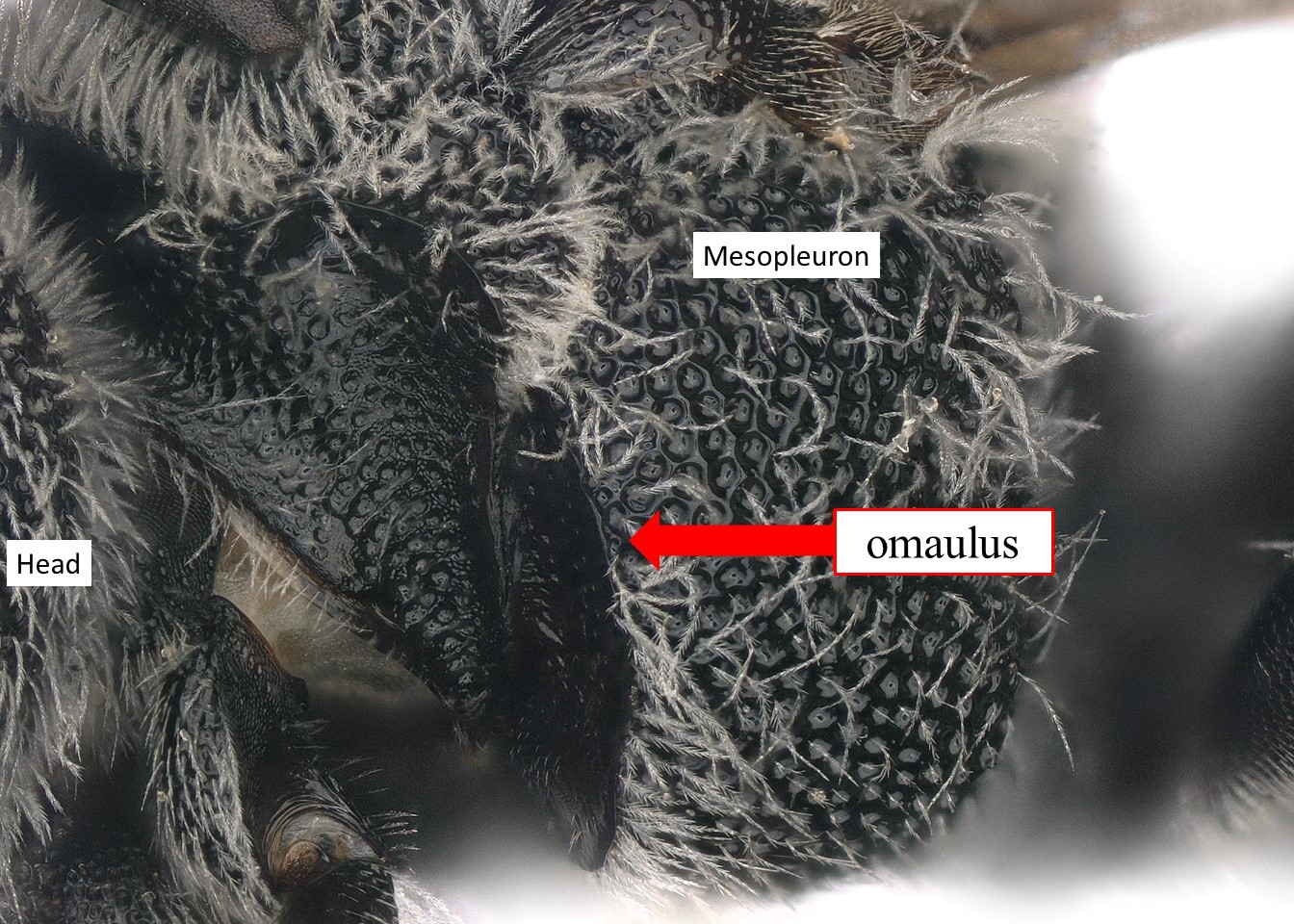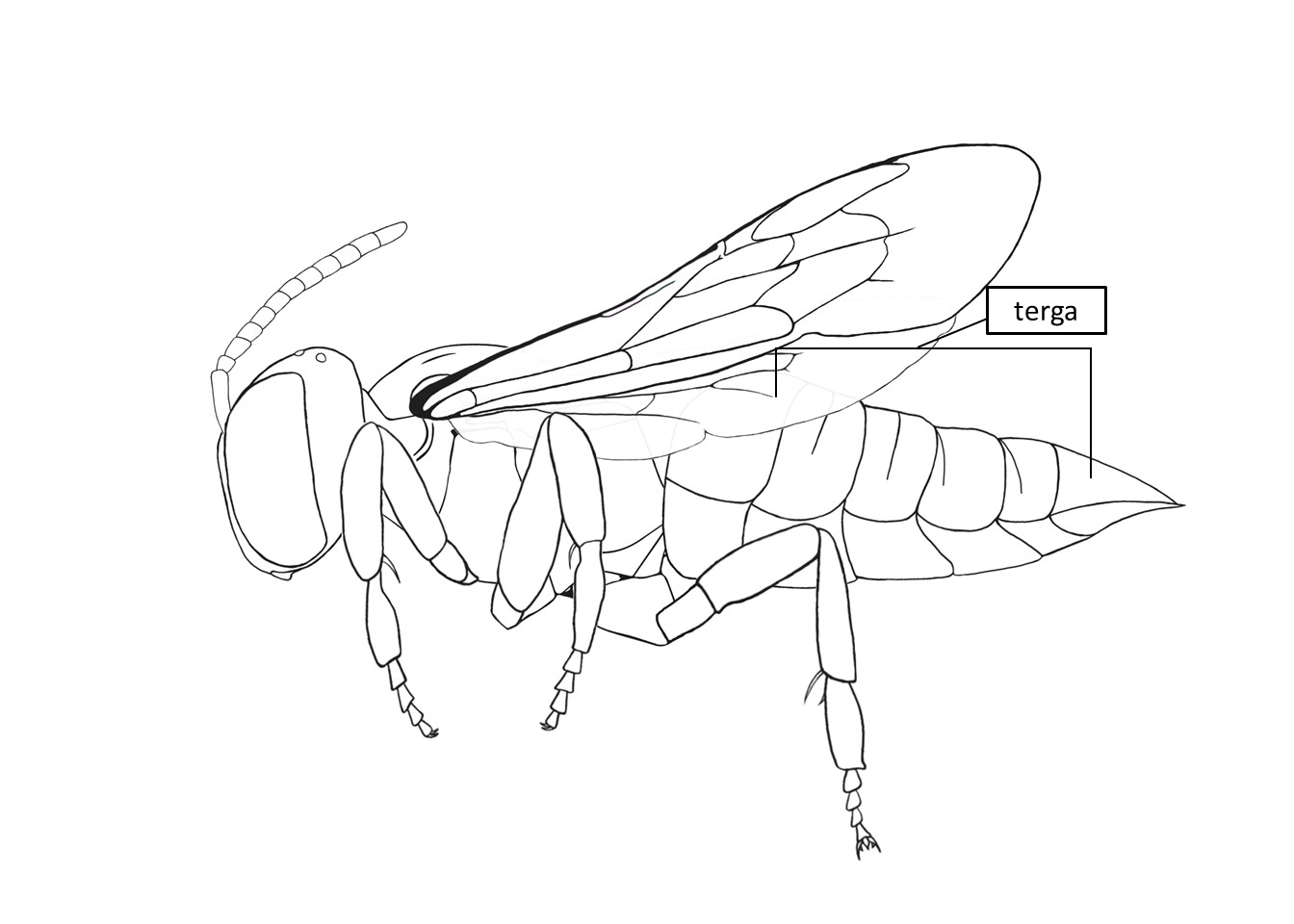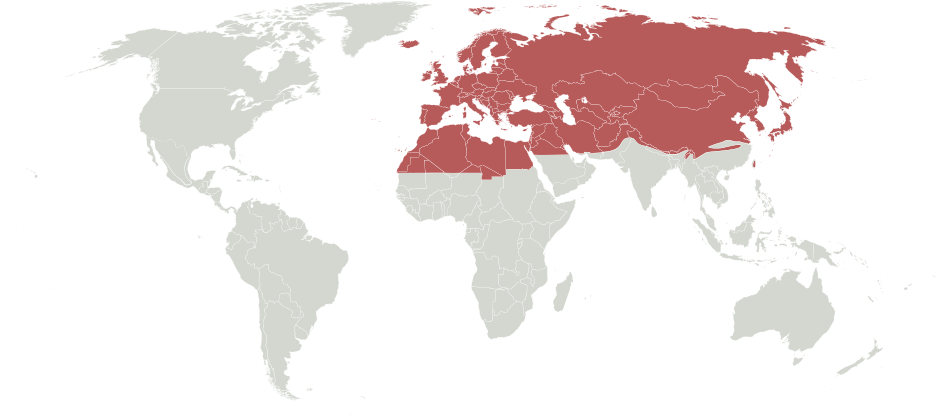Family: Megachilidae
Subfamily: Megachilinae
Tribe: Anthidiini
Genus: Icteranthidium Michener, 1948
Subgenera: none
Common name: none
Icteranthidium often have black integumentintegument:
a tough, protective outer layer
with extensive yellow markings on their head and thorax, and many species have almost entirely yellow abdomens (Michener 2007Michener 2007:
Michener, C.D. 2007. The Bees of the World (2nd ed.). Johns Hopkins University Press, Baltimore and London, 953 pp.). Their body length can range from 7.5–15 mm (Michener 2007Michener 2007:
Michener, C.D. 2007. The Bees of the World (2nd ed.). Johns Hopkins University Press, Baltimore and London, 953 pp.).
Icteranthidium consists of approximately 25 species (Michener 2007Michener 2007:
Michener, C.D. 2007. The Bees of the World (2nd ed.). Johns Hopkins University Press, Baltimore and London, 953 pp.); none are known to occur in the U.S. or Canada.
(modified from Michener 2007Michener 2007:
Michener, C.D. 2007. The Bees of the World (2nd ed.). Johns Hopkins University Press, Baltimore and London, 953 pp.)
 carinatecarinate:
carinatecarinate: is concave in profile.
is concave in profile. with margin convexconvex:
with margin convexconvex: has a mid-apical projection. Occasionally, a laterallateral:
has a mid-apical projection. Occasionally, a laterallateral:There are no known invasives.
Many Icteranthidium are generalists and can be found visiting up to 15 flower species (Müller 1996). Some species, including I. cimbiciforme, I. fedtschenkoi, I. laterale, I. afrum, have been found to exclusively or primarily visit Compositae (Müller 1996).
Icteranthidium is distributed from Morocco and Portugal to Mongolia, and throughout southern Europe, northern Africa, and southeast Pakistan (Michener 2007Michener 2007:
Michener, C.D. 2007. The Bees of the World (2nd ed.). Johns Hopkins University Press, Baltimore and London, 953 pp.). They also inhabit xericxeric:
a very dry habitat
habitats in Asia (Michener 2007Michener 2007:
Michener, C.D. 2007. The Bees of the World (2nd ed.). Johns Hopkins University Press, Baltimore and London, 953 pp.).
Distribution map generated by Discover Life -- click on map for details, credits, and terms of use.
Michener, C.D. 2007. The Bees of the World. 2nd ed. Johns Hopkins University Press, Baltimore and London, 953 pp.
Müller, A. 1996. Host-Plant specialization in Western PalearcticPalearctic:
the largest biogeographic region; consists of Europe, Asia north of the Himalaya foothills, Northern Africa, and the northern and central parts of the Arabian Peninsula Anthidiine bees (Hymenoptera: Apoidea: Megachilidae). Ecological Monographs 66:235-257.
Anthidiine bees (Hymenoptera: Apoidea: Megachilidae). Ecological Monographs 66:235-257.